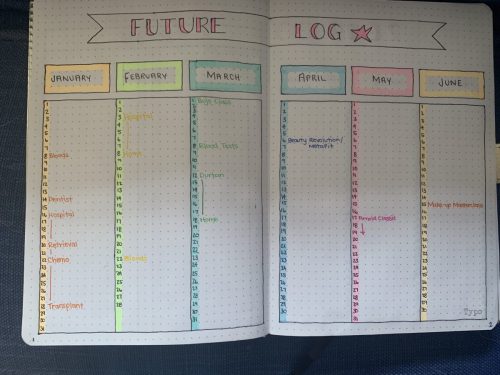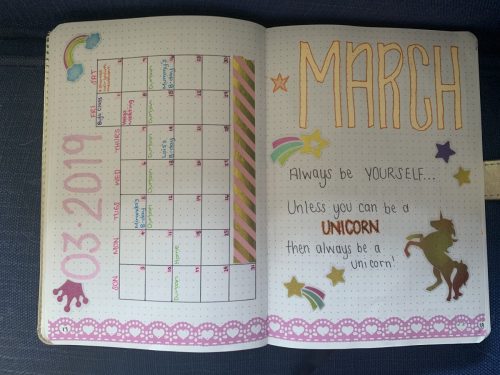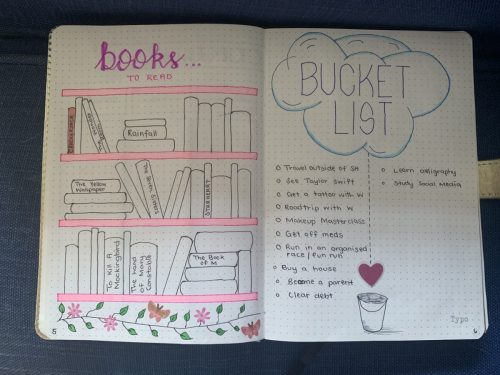Bullet Journaling and Chronic Illness Go Hand in Hand

I have been housebound since my stem cell transplant and was starting to get rather crabby about the whole situation. I am used to independence — visiting friends and going to work — so this has been a very trying time. However, it has also been good because I have been able to spend time reminding myself of priorities and relearning what I enjoy.
We adults so often rush around making sure everyone around us is pleased, when instead we should invest in our care and what makes us happy. As RuPaul puts it, “If you don’t love yourself, how in the hell are you going to love someone else?”
Last week, I attended a bullet journaling (BuJo) course. Bullet journaling has helped me reorganize my life to emphasize priorities in self-care.
Bullet journaling was designed and made popular by Ryder Carroll. It’s marketed as a tool to track the past, organize the present, and plan for the future. It is not content-heavy, but rather consists of short notes that make life a little easier. Users put together organizational items such as daily planning, personal journals, and to-do lists in one flexible, customizable productivity tool.
I had too many notebooks before I began bullet journaling. There was a notebook cataloging booked meetings, another with client notes, and another with health records including my medication list and any experienced side effects. I felt like a donkey hauling around everything and the heaviness was becoming way too much, emotionally and physically.
After reading many articles about the benefits of bullet journaling, I realized that I needed its organization. I began following different people who BuJo on Instagram, Facebook, and Pinterest, and they made me feel confident that bullet journaling was the right tool for me. My boss organized a day to spoil her workers, and surprisingly it was a Bujo course for beginners! It was like she had read my mind.
Bullet journals are individualistic. Creators can track habits, mood, medication, exercise, doctor’s appointments, and anything else deemed important. I am not artistic at all but I have loved finding stickers and stencils to use in my journal, plus coming up with thematic ideas for each page. The best part of bullet journaling is that it helps me escape my current life and think to the future — my Type A personality thrives. I can’t control my condition but I can control my thoughts. In fact, one page is dedicated to positive sayings that help me when I feel down and need a little pick-me-up.
People with chronic health problems can use the journal to track medication compliance, take notes at doctor’s appointments, and jot down questions to discuss at future appointments. If fatigue strikes after taking a certain medication, or muscle weakness is experienced after drinking coffee, trends may be noted in the journal as evidence of side effects.
There is so much flexibility in bullet journaling that can help people with chronic health problems. Take a look at what others have done in their bullet journaling design for inspiration. Happy journaling!
***
Myasthenia Gravis News is strictly a news and information website about the disease. It does not provide medical advice, diagnosis or treatment. This content is not intended to be a substitute for professional medical advice, diagnosis, or treatment. Always seek the advice of your physician or other qualified health provider with any questions you may have regarding a medical condition. Never disregard professional medical advice or delay in seeking it because of something you have read on this website.










Leave a comment
Fill in the required fields to post. Your email address will not be published.